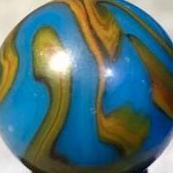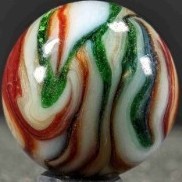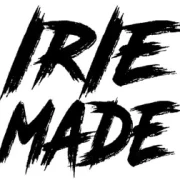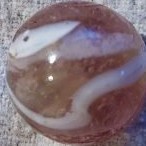
shiroaiko
Members-
Posts
227 -
Joined
-
Last visited
-
Days Won
1
shiroaiko last won the day on May 13 2024
shiroaiko had the most liked content!
About shiroaiko
- Currently Viewing Topic: A German Greiner?
- Birthday 10/11/1973
Previous Fields
-
Gender
Female
-
Please type the following
572
Profile Information
-
Location
Yamagata, Japan
Recent Profile Visitors
1469 profile views
shiroaiko's Achievements
-
Duck Marbles from the Seike family
shiroaiko replied to shiroaiko's topic in General Marble & Glass Chat
Hello @MaxxNaoyukiYamasaki, Thank you so much for your message. I am so thrilled to read it! May I ask, was it the Asahi shimbun article that led you to this forum? Naoyuki Seike being your great grand father is especially meaningful to me, as he was one of the most important figures on my research on the Japanese marbles. I would be very honored to be put in contact with your father. Any information, memories or documents you might be willing to share would be invaluable to preserving the history more accurately. I was also fascinated about your grand mother Junko and her work at Zojirushi. It is wonderful to learn an inventive spirit continued thru generations. I'm planning to visit Osaka later this month. If you or your family are in the area, I'd love to see if we could find some time to talk to. Again, thank you so much for reaching out. I truly appreciate it more than I can say. Best Wishes, Aiko -
An article about my research was published in The Nikkei, Japan's leading newspaper specializing in business, economics and industry. While The Nikkei is best known fo financial and corporate news, its final page is devoted to cultural topics. My article appeared in this culture section. Below is the English version for the forum. =================================================================================== The Nikkei, 28 Aug. 2025 Japan as a Leading Marble Producing Nation : An Industrial History Behind Its Modernization Research uncovers the origins - and the creators - of the once-mysterious "nishiki" marbles The sparkle of a ramune marble and the gentle clinking sound it makes inside a glass bottle are familiar to many people in Japan. While ramune originated as a Western carbonated drink, it came to be defined less by its contents than by its distinctive marble-stopper bottle. These marbles also represent the starting point of the country’s glass marble industry. From the late Taisho period (1912–1926) through the postwar years, large quantities of glass marbles were exported. However, this history is not widely recognized today. The origins of this industry can be traced to Meiji 25 (1892), when glass manufacturer Tamakichi Tokunaga succeeded in the domestic production of marble-stopper bottles. This achievement marked the beginning of glass marble production. In the early years, marbles were made entirely by hand. As demand increased, production gradually became mechanized, particularly among manufacturers in Osaka, where glass-related industries were already well established. Before the war, the Japan Glass Marble Industry Association consisted of seventeen member companies. After the war, production expanded rapidly, with annual output exceeding 8,500 tons. These marbles were exported worldwide and contributed to the industrial recovery during the postwar period. I have been collecting glass marbles for nearly thirty years, and I share my research with collectors through international online forums. My interest in glass marbles also has a personal background. I was born in 1973 and was drawn from early childhood to transparent and reflective objects. At that time, children sometimes played with marbles, with flat marbles more common among girls and spherical glass marbles more often associated with boys. I was shy and never brought myself to ask the boys to show me their marbles. Glass marbles, smoother and rounder than flat marbles, left a strong impression on me. Later, I trained as a glass artist and worked for approximately twenty years as a lampworked bead maker in Sendai. Alongside this work, I began collecting glass marbles in the summer of 1998. In the late 1990s, marbles reappeared in toy stores through games such as B-Daman, and brightly colored marbles imported from Mexico became available. As I visited antique markets and curio shops, I encountered older marbles with unfamiliar patterns. Compared to contemporary products, these marbles carried a distinct presence shaped by time. This led me to become increasingly interested in their manufacturing methods and historical contexts. Among the marbles I encountered, those known among overseas collectors as “Stripeys” attracted particular attention. These marbles do not have a specific name in Japan and are generally understood as a type of nishiki or cat’s-eye marbles. Within clear glass, blended colored vanes create distinctive internal patterns. Because many examples had been reported in Canada and Europe, overseas collectors came to believe that these marbles originated there. However, the same type is also frequently found within the country. As a major producing country, domestic demand could be met without relying on imports from countries with stronger currencies, making Western-made marbles rare within the country. This raised questions about the commonly accepted assumptions regarding the origins of these marbles. In the course of my research, I examined archival documents and visited locations where marble factories had once operated, speaking with individuals connected to those areas. This process highlighted the significance of Naoyuki Seike, founder of Nippon Special Glass Ball Mfg. Co., Ltd., which was the largest marble producer in the country before the war. In 1924, Seike obtained Japan’s first patent for a marble-forming machine and operated a factory in Hanaten, Osaka. Through this research, I had the opportunity to speak with Seike’s daughter-in-law, who is still living. According to her account, when Seike passed away in 1963, he left a bucket filled with glass marbles to each of his five children. I was entrusted with a portion of these keepsakes, which included an example of the marble later referred to overseas as Stripeys. For Japanese makers and consumers, transparency was an essential aesthetic quality of glass, and this sensibility is clearly reflected in nishiki marbles. In contrast, marbles favored in Western cultures tended to feature rich, opaque colors rather than transparency. In 1938, Tatsukichi Isogami, chairman of the Marble Association, filed a utility model application related to nishiki marbles. By the following year, Seike had developed a related variant of this design, which later came to be known among overseas collectors as Stripeys. I self-published these research findings as The History of Japanese Glass Marbles (2024). At present, Matsuno Industry Co., Ltd. in Osaka is the only company continuing the manufacture of glass marbles in the country. Few people remain who have direct knowledge of the former industry, but I hope to continue uncovering this history and bringing it to light. By Aiko Suzuki
-
This is the first time I've seen this type. Judging from the two pontils, were cane cut marbles made in Germany?
-
You're welcome!☺️🙏
-
Hi Jim, thanks for your question! Naoyuki Seike began marble production in 1924 (Taishō 13) when he started his marble factory in Hanaten, Osaka. His method was a Western-style process: hand-gathered glass that was machine-rolled. In that sense, his marbles were technically similar to Western Transitionals. His pontils are thought to be spidery crease pontils. Other makers, such as Yasuda is thought to make pinch pontils, and Nakanishi made fire-polished transitionals with smoother finish on his pontils (Showa8/1933 Utility Model-18246). Before this method, marbles were made differently in Japan. Bottle-stopper clearies and marbles with pattern were produced mainly by lampworking, not by furnace gathering and machine rolling. These were flame-worked products. The first successful production of marble stoppers for bottles in Japan dates back to 1892 (Meiji 25). This was achieved by Tamakichi Tokunaga, the owner of a bottle factory in Osaka. After about five years of experimentation, he succeeded, but he died suddenly, and the work was later taken over by his four sons. One of them, YoshijiroTokunaga, filed a patent in 1910 (Registered Utility Model No. 17091) titled “Jewel/Bead/Marble Manufacturing Furnace.” Despite the word “kamado/furnace,” the illustration shows a cover designed to shield a burner flame to improve efficiency, again pointing to lampworking rather than a Western furnace-based hot work process. Among Japanese glass toy collectors, the earliest marbles are commonly known as heso-dama (“navel marbles”). In this method, artisans first made a glass stringer. A small amount of softened glass was then heated and wound around the stringer tip about 2–3 mm from the end. Once a roughly spherical marble shape was formed, the stringer was snap-cut very close to its base. The flat snap-cut mark is what we call the heso (“navel”). Because a stringer is thin, it cannot withstand the massive heat of a glass furnace, so it can be only used for lampworking. This same stringer-based technique can be seen not only in early marbles, but also in other early glass toys such as ohajiki and glass gourds netsuke.
-
Hi, @aussie😃 The last picture shows a diminishing hand gathered tail. I'd say it is a transitional, possibly Japanese, but the rough surface makes the pontil hard to read. My largest transitionals are just over 1 inch, around 27-8 mm.
-
@Alta, happy to be a help. You are very welcome. 😃
-
Hi everyone.😃 I agree with the opinions here. I have a Japanese transitional in the same color and style. It came from an original box saying "GLASS MARBLES BIG VALUE EICO N.Y.", which I got from Brian Graham when we traded marbles years ago. He asked me to find the information about the box, but so far I haven't been able to find anything. The green one measures 15.4 mm/ 0.61 inch.
-
@Parmcat You're welcome! 😃
-
Thanks for including me. I agree with Chad too. These look like Yasudas, or Japanese transitionals. Just to add, crease pontils are typical of Seike, the largest marble maker in pre-war Japan.
-
I would say that is a typical Seike. Both the pattern and the glass are characteristic. Sometimes his green glass has dark green bits in it. The marble in question looks to have some. Below are examples from the UK, the largest destination of Seike marbles.
-
You can also find some identical marbles in the image Ric shared in this post.
-
I haven't come across any Wale's variegated marbles that are single colored. They always come in more than two colors combined with white. The marbles in question look more like Matsuno's pinchers.




























